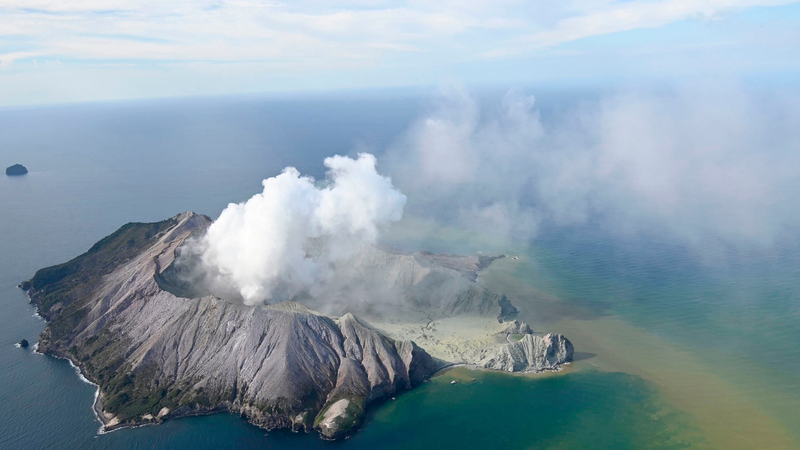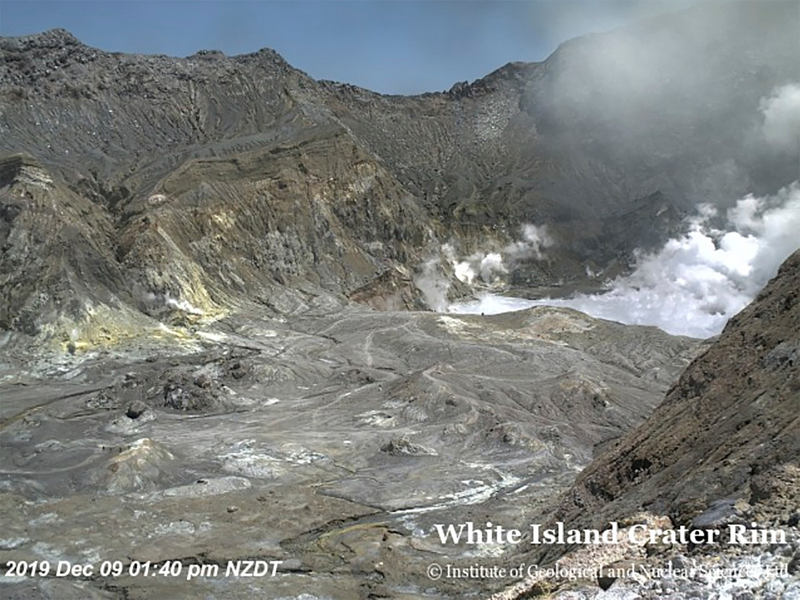
Dozens Feared Dead After New Zealand's Most Active Volcano Erupts
by Yessenia FunesWhite Island is home to New Zealand’s most active volcano. And on Monday, it erupted while tourists were visiting, and police reports indicate there are “no signs of life.”
The volcano sits northeast of New Zealand’s North Island in the Bay of Plenty. Despite experiencing regular eruptions—most recently in 2016—the volcano has been a major tourist attraction where visitors arrive via helicopter or boat to see the active volcano in all its glory. Unfortunately, about 50 people were on the island when the volcano shot an ash plume some 12,000 feet into the air. Australian Prime Minister Scott Morrison has confirmed that 24 of those on the island at the time of the eruption are Australians.
Five people have been confirmed dead, and the rest are still unaccounted for. While there’s been no indication so far that anyone survived the event, authorities still haven’t had a chance to properly evaluate and assess the situation. It’s still early morning in New Zealand, so the plan is to properly investigate once the sun rises in a few hours.
What many are left wondering, though, is why were people allowed so close to an active volcano in the first place? This eruption was an “impulsive, shortlived event,” as GeoNet, the geological hazard source for New Zealand, wrote on its website. The agency rated it as a minor volcanic eruption. That means that the eruption only affected the vent of the volcano.

What put people in danger was not the eruption itself but rather their proximity to the vent. At White Island, visitors can walk in the crater, though they must wear gas masks to protect themselves from any sulfur dioxide emanating from the vents. This toxic gas is a major threat to life during eruptions—and this one in New Zealand is only the latest to turn deadly.
Researchers are working to improve volcanic warning systems so people have more time to get out of harm’s way (or not end up there in the first place). More timely warnings are crucial, and recent eruptions show why. Last year, dozens died in Guatemala after the Fuego Volcano erupted. In Hawaii, lava poured out of the Kilauea Volcano last year for months. It was the volcano’s largest eruption in centuries and destroyed hundreds of homes and caused hundreds of millions in damage.